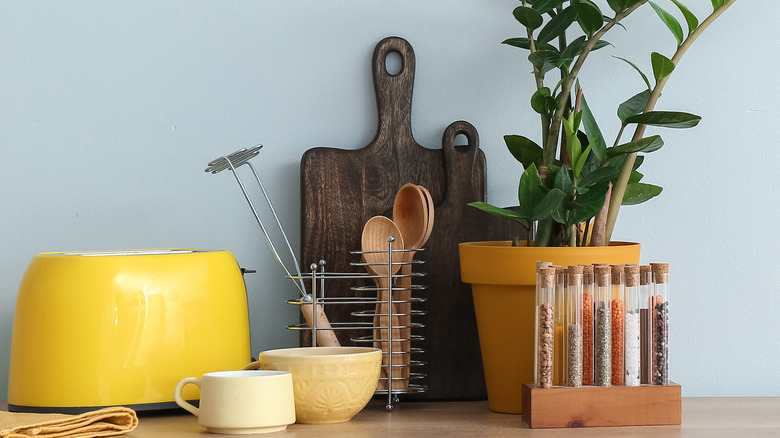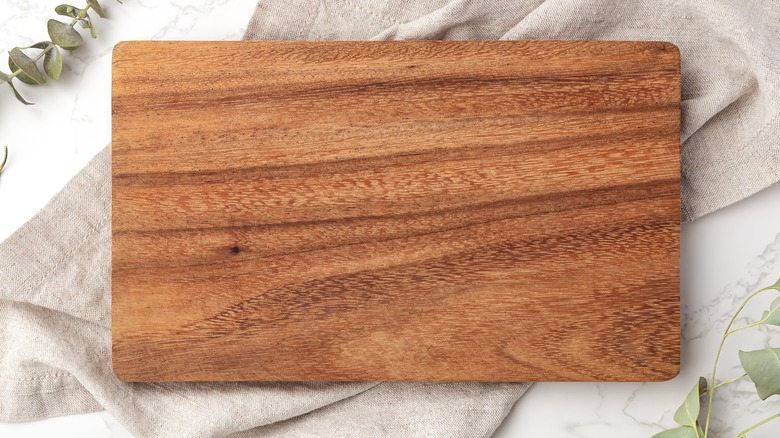Store Dried Cutting Boards Standing Vertically For Long-Lasting Use
Cutting boards are an everyday essential. Helping you prep ingredients without wrecking tabletops, they're one of the most frequently used items in the kitchen, and learning how to properly care for cutting boards is a must. While there is some variation in the quality of care required based on their materials, one tip that will keep most boards in tip-top shape is storing them in an upright and vertical position.
Once cutting boards are washed, it might be a natural reflex to place them flat on a countertop, ready to be used for the next round of meal prep. However, this can have an especially damaging effect on cutting boards made from natural materials like wood or bamboo that are porous. Since moisture can become trapped between the surface of the board and the surface where it's placed, water droplets can penetrate deep into the board. As a result, wet cutting boards can begin to warp when kept in a horizontal position. Not to mention that a damp board is also more likely to harbor bacteria.
So, to prevent cutting boards from curving, splitting, or posing a health risk, the solution is simply a matter of speeding up the drying process. The best way to do that? Prop boards vertically to allow residual water to gravity-pull down and encourage good air circulation for drying.
What to remember before storing cutting boards, vertically
After giving cutting boards a thoroughly soapy scrub on either side and rinsing clean, they should always be blotted dry, regardless of their material. However, unlike boards made from synthetic materials that can, almost immediately, be stowed away on a shelf, porous boards need to be placed vertically to complete the drying process.
Unsure how to position the half-dried cutting boards? Start by propping a board on the countertop or an area that allows for airflow — avoid closed cabinets. Next, lean the cutting board on a slant, either against a wall or a cupboard. Alternatively, you can position a board in a U-shaped napkin holder or between the grooves of a drying rack. Once fully dried, you can oil wooden or bamboo boards to prevent fibers from expanding and contracting, minimizing the risk of further warping or cracking.
Despite that plastic, glass, composite, or granite cutting boards won't experience the same sort of degradation when left horizontally, it's best to get into the habit of positioning boards upright. After all, doing so still wicks water away faster, and reduces the accumulation of dust when boards rest idle. Leaning them vertically can even be a great way to showcase aesthetic cutting boards. No matter the motive, storing cutting boards vertically is always a good idea!

